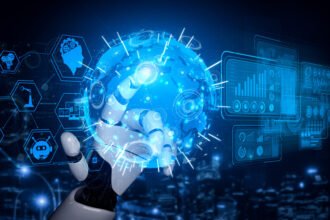The fun thing about trying to figure out what might happen next in software and business in general is the ability to evolve your thinking over time as you gain more data and more clarity. I suppose that’s why IDC’s tag line is “analyze the future”, that’s effectively what my job is, at least a large part of it. Sometimes the process is sort of like putting together a puzzle that is mostly blank pieces, but the pieces slowly reveal themselves to you over time. The more pieces you reveal the better the overall picture becomes. Ok, enough rambling around inside my head, what’s the point of this anyway? The point is this, I started a few years ago thinking and talking about social media, social networking and enterprise 2.0. That evolved into social enterprise which I used to mean the combination of e2.0 and social CRM and eventually we started calling the movement social business. As a part of social business I started to dig into a concept that I think is an important key to understanding what is happening, that is, in the transformation of business people become the new enterprise platform. That people-centricity is absolutely critical to understanding and building the processes . …
The fun thing about trying to figure out what might happen next in software and business in general is the ability to evolve your thinking over time as you gain more data and more clarity. I suppose that’s why IDC’s tag line is “analyze the future”, that’s effectively what my job is, at least a large part of it. Sometimes the process is sort of like putting together a puzzle that is mostly blank pieces, but the pieces slowly reveal themselves to you over time. The more pieces you reveal the better the overall picture becomes. Ok, enough rambling around inside my head, what’s the point of this anyway? The point is this, I started a few years ago thinking and talking about social media, social networking and enterprise 2.0. That evolved into social enterprise which I used to mean the combination of e2.0 and social CRM and eventually we started calling the movement social business. As a part of social business I started to dig into a concept that I think is an important key to understanding what is happening, that is, in the transformation of business people become the new enterprise platform. That people-centricity is absolutely critical to understanding and building the processes and systems that facilitate the social business transformation. I’m starting to think though, that social business is really just a part of a bigger thing, the people-centric enterprise.
People-centricity defines our current social and business progression past the industrial society’s focus on business, technology and process. Not that business or technology or process go away, but instead they become supporting structures that facilitate new ways of collaborating and interacting with customers, suppliers, partners and employees. The idea also has to permeate system and process design. Here’s a simple example from collaboration systems. In the past collaboration was more often that not defined as the ability to share and work on a file, so let’s call the system file-centric. File-centricity defines the core of how the system works, it’s core workflow. In the defined process you create a file, upload a file, share a file, edit a file, review a file, approve a file, etc. So as long as the collaborative work is about a file the system process is fine. What happens though, when I need to deal with a customer who calls in a service issue, the product they ordered from their account executive is on backorder and won’t meet a critical deadline? I probably start by logging the issue in my CRM system of course and then maybe I look up the order history in the order management system…so far so good, I’m doing system-centric tasks. But if the answers are not clearly in the system the work changes. Maybe there is conflicting information in the system so I have to talk to the account executive or the warehouse supervisor (phone, IM, do we have presence or unified communications…email). Perhaps it’s a logistics problem or a production problem…all of these are people-centric tasks. From a system perspective the customer service rep needs something to bring interaction with systems, information and people together, not a file.
Working with customers, internal and external business partners, suppliers, logistics providers, at the core they’re all people-centric issues. Not that you don’t need to share files or work together on files, co-creating documents, sharing information, all of those things support the work and need to be accounted for in a collaboration system, but the focus is on enabling people to people interaction. This concept also extends to process. Current systems do an adequate job of facilitating work process (one might argue some systems are much to rigid, but that’s a topic for another post). The problem arises when the work doesn’t fit the process. Workers today often spend much more time on problems that fall outside of the business process, or exception processing. Exception processing often involves working outside of systems and gathering temporary teams to work through the issues. These ad hoc work requirements are a necessary part of the business but can take an inordinate amount of the resources. Because they tend to be people-centric, most fall outside the enterprise systems and processes. We need collaboration systems that are social, or people-centric and capable of effectively dealing with the ad hoc nature of information-based work.
This extends to most enterprise systems as well. Project management is really about executing against a plan, or in other words about people working together to accomplish some end goal…which is by its nature social or people-centric. Content management is file centric but if you step above the files and start to think about curation of content, people are once again the key to accomplishment. Many enterprise tasks today have moved to a more people-centric method and the systems have not caught up.
So where am I going with this train of thought…I’m not sure yet. I do know that the concept of people-centric enterprise is important and that it needs to be built into our systems and processes. The shift in focus from process and technology to people is the key to working in a post-industrial information driven business, IMHO. I’m starting to think about a broader research project to try and tie this together across the enterprise and across the underlying systems but the thought is only just starting to come together.







